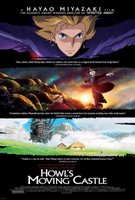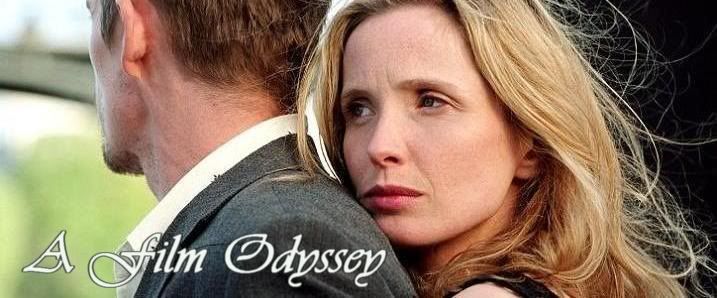Howl's Moving Castle (2005)
 Unlike the mythological Princess Mononoke or the fantastic childhood nostalgia of Spirited Away, Howl’s Moving Castle is a Miyazaki film that seems content to meander from one location and idea to the next with less in the way of tangible coherence than deeply satisfying emotional curiosity. This fact might limit it from reaching the same pinnacles as those two previous films, but for all its losses, the film gains a sense of visual wonder almost completely freed from the strains of a narrative-driven film. In a way, the titular vehicle, a massive plethora of rooms, stacks and chunks that lumbers from place to place on spindly legs (all the while swelling and bending in manners that seem wonderfully contradictory to the laws of physics), is representative of the entire film. Much of it may lack in explanation or logic, but the presence of it all it is a wonder to behold.
Unlike the mythological Princess Mononoke or the fantastic childhood nostalgia of Spirited Away, Howl’s Moving Castle is a Miyazaki film that seems content to meander from one location and idea to the next with less in the way of tangible coherence than deeply satisfying emotional curiosity. This fact might limit it from reaching the same pinnacles as those two previous films, but for all its losses, the film gains a sense of visual wonder almost completely freed from the strains of a narrative-driven film. In a way, the titular vehicle, a massive plethora of rooms, stacks and chunks that lumbers from place to place on spindly legs (all the while swelling and bending in manners that seem wonderfully contradictory to the laws of physics), is representative of the entire film. Much of it may lack in explanation or logic, but the presence of it all it is a wonder to behold.Howl is but one of many wizards and witches in this fantastical land, one whom is known through rumors for his ruthless behavior toward beautiful woman, but in fact shows suave kindness to the young Sophie in a chance encounter. Later, after Sophie unknowingly offends the evil Witch of the Waste and is promptly transformed into a ninety-year-old woman (the curse works double fold in that she is unable to talk to anyone about it), she seeks out Howl and takes on the job of his cleaning lady, hoping to eventually be cured of her condition. Howl’s reckless use of his magical powers is reaching new levels of potential danger to himself and others, all at the same time the countryside is at war (the ambiguity and implied corruption of which suggests a passive commentary on world politics), a mess which Sophie and her newfound company quickly find themselves in the midst of.
Miyazaki’s knack for offbeat supporting characters is as evident here as ever: a silent, always helpful scarecrow (dubbed ‘turnip head’ for obvious reasons), a fire demon named Calcifer, forced by Howl through a spell to power the castle, and the usual motley of contrasting human characters make up the diverse cast. Even when the story seems about to burst at the seams, the depth and nuance of the characters keeps the proceedings both relevant and affecting, as the various visual motifs, character relations and metaphysical implications are often hazy and seemingly inconsistent, even to the most seasoned Miyazaki fans. In the English-dubbed version, Billy Crystal is a constant hoot as Calcifer, although the voice actors in the original version (unseen by me) are said to be more in character. The visuals, however, an economic combination of traditional hand-drawn cell animation with computer-generated scenery, are the most aesthetically satisfying element of the film one way or another; the soulless CG spectacles from DreamWorks and Disney can’t even begin to hold a candle.





